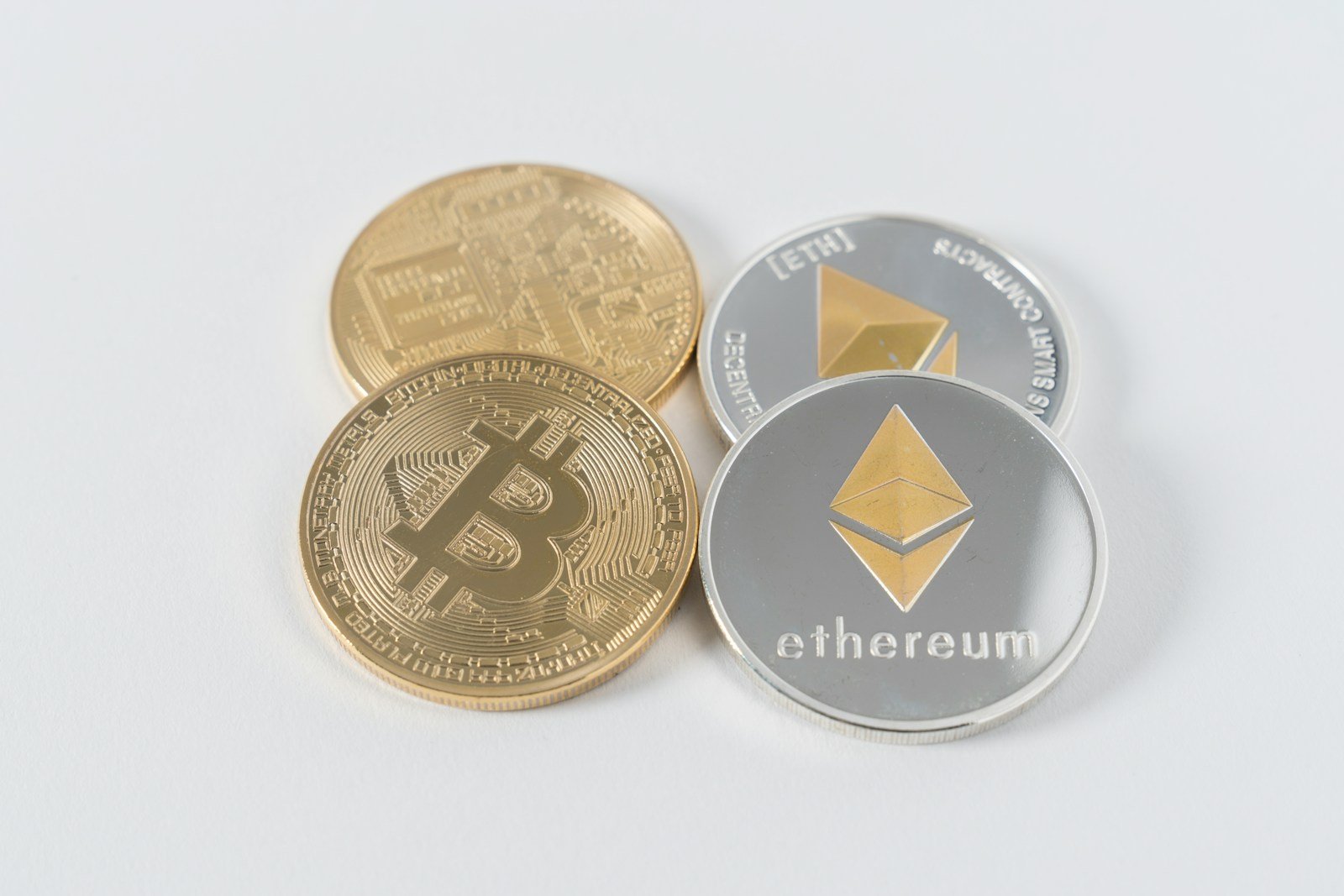Table of Contents
- Introduction
- Understanding Cryptocurrency
- The Power of Blockchain Technology
- Popular Cryptocurrencies
- Additional Resources and Further Reading
- Practical Tips and Actionable Advice
- Conclusion
Introduction
In the ever-evolving world of finance, a new revolution is underway – one that is challenging traditional systems and offering a decentralized, secure, and transparent alternative. This revolution is known as cryptocurrency, and it has captured the attention of investors, tech enthusiasts, and forward-thinking individuals worldwide.
Cryptocurrency is more than just a digital form of money; it represents a paradigm shift in how we perceive and interact with financial systems. With its roots in cutting-edge cryptography and blockchain technology, cryptocurrency promises to disrupt traditional banking, facilitate global transactions, and empower individuals with greater control over their finances.
As the world becomes increasingly digitized and interconnected, understanding cryptocurrency and its potential implications is becoming increasingly important. Whether you’re an investor seeking new opportunities, a tech-savvy individual eager to explore emerging technologies, or simply someone curious about the future of finance, this comprehensive guide will demystify the world of cryptocurrency and provide you with the knowledge and tools to navigate this exciting new frontier.
Understanding Cryptocurrency
At its core, cryptocurrency is a digital or virtual form of currency that uses cryptography for secure financial transactions. Unlike traditional fiat currencies, which are issued and regulated by central authorities, cryptocurrencies operate on decentralized networks, making them immune to government interference or manipulation.
One of the key characteristics of cryptocurrencies is their reliance on blockchain technology, a distributed digital ledger that records and verifies transactions in a secure and transparent manner. This innovative technology eliminates the need for intermediaries, such as banks or financial institutions, and enables direct peer-to-peer transactions.
Cryptocurrencies are designed to be scarce, with a predetermined supply that is either fixed or follows a predictable issuance schedule. This scarcity, combined with the decentralized nature of cryptocurrencies, helps to protect them from inflationary pressures and ensures their value is determined by market forces rather than centralized authorities.
The Power of Blockchain Technology
At the heart of cryptocurrency lies the revolutionary blockchain technology, a distributed ledger system that records and verifies transactions in a secure and transparent manner. The blockchain is essentially a decentralized database that is maintained and updated by a network of computers, known as nodes, rather than a single centralized authority.
Each block in the blockchain contains a record of multiple transactions, and these blocks are linked together in a chronological chain using advanced cryptographic techniques. This design ensures that once a block is added to the chain, it becomes virtually impossible to alter or tamper with the recorded data, providing an unparalleled level of security and transparency.
The decentralized nature of the blockchain also eliminates the need for intermediaries, such as banks or financial institutions, enabling direct peer-to-peer transactions without the need for third-party verification or oversight. This not only reduces transaction costs and processing times but also empowers individuals with greater control over their finances.
Beyond cryptocurrency, blockchain technology has the potential to revolutionize various industries by providing secure and transparent record-keeping systems for a wide range of applications, including supply chain management, voting systems, and digital identities.
Popular Cryptocurrencies
While there are thousands of cryptocurrencies in existence, a few stand out as the most widely recognized and adopted. Here are some of the most popular cryptocurrencies and their key features:
Bitcoin (BTC)
Bitcoin is the pioneering cryptocurrency that started it all. Introduced in 2009 by the pseudonymous Satoshi Nakamoto, Bitcoin is a decentralized digital currency that operates on a peer-to-peer network. It was the first successful implementation of blockchain technology and has since become the most widely adopted and valuable cryptocurrency in the market.
Ethereum (ETH)
Ethereum is more than just a cryptocurrency; it’s a decentralized computing platform that enables the creation and execution of smart contracts and decentralized applications (dApps). Ethereum’s native cryptocurrency, Ether (ETH), is used to power the network and facilitate transactions within the Ethereum ecosystem.
| Cryptocurrency | Market Capitalization (as of May 2023) |
|---|---|
| Bitcoin (BTC) | $500 billion |
| Ethereum (ETH) | $200 billion |
| Tether (USDT) | $80 billion |
| Binance Coin (BNB) | $60 billion |
Other notable cryptocurrencies include Tether (USDT), a stablecoin pegged to the US dollar; Binance Coin (BNB), the native cryptocurrency of the Binance exchange; and Ripple (XRP), a cryptocurrency focused on facilitating cross-border payments and remittances.

Additional Resources and Further Reading
For those interested in exploring the world of cryptocurrency further, here are some recommended resources:
- “Mastering Bitcoin” by Andreas M. Antonopoulos – A comprehensive guide to understanding Bitcoin and blockchain technology.
- “The Internet of Money” by Andreas M. Antonopoulos – A deep dive into the history, technology, and potential implications of cryptocurrencies.
- “The Age of Cryptocurrency” by Paul Vigna and Michael J. Casey – A fascinating exploration of the rise of cryptocurrencies and their impact on the global financial system.
Frequently Asked Questions
Q: Is investing in cryptocurrencies safe?
A: Investing in cryptocurrencies carries inherent risks due to their volatility and the relatively new nature of the market. It’s important to thoroughly research and understand the risks involved before investing. Additionally, storing cryptocurrencies securely and protecting your digital wallets is crucial.
Q: Can cryptocurrencies be used for everyday transactions?
A: While the adoption of cryptocurrencies for everyday transactions is still in its early stages, there is a growing number of merchants and businesses that accept cryptocurrencies as payment. However, the volatility of cryptocurrency prices and regulatory uncertainty can make it challenging for widespread adoption as a medium of exchange for everyday transactions.
Practical Tips and Actionable Advice
Navigating the world of cryptocurrency can be overwhelming for beginners, but with the right knowledge and approach, it can be an exciting and potentially rewarding journey. Here are some practical tips and actionable advice to help you get started:
- Educate yourself: Before diving into the world of cryptocurrency, it’s essential to educate yourself thoroughly. Understand the underlying technology, risks, and potential benefits. Read books, watch tutorials, and follow reputable sources to gain a comprehensive understanding.
- Start with small investments: As with any investment, it’s wise to start small and gradually increase your exposure as you gain more experience and confidence. This will help you manage risks and learn from potential mistakes without risking significant capital.
- Choose a reputable cryptocurrency exchange: When buying or trading cryptocurrencies, it’s crucial to use a reputable and secure exchange. Research and compare different exchanges based on factors such as security measures, trading fees, user-friendliness, and liquidity.
- Secure your digital wallet: Cryptocurrencies are stored in digital wallets, and securing these wallets is of utmost importance. Consider using hardware wallets, which offer an extra layer of security by storing your private keys offline. Additionally, enable two-factor authentication and follow best practices for password management.
- Diversify your portfolio: While cryptocurrencies can be a exciting investment opportunity, it’s essential to maintain a diversified portfolio. Don’t allocate all your resources to a single cryptocurrency or project. Spread your investments across different cryptocurrencies, as well as traditional asset classes, to mitigate risk.
- Stay up-to-date: The cryptocurrency market is highly dynamic, with constant innovations, regulatory changes, and market fluctuations. Stay informed by following reputable news sources, blogs, and forums to stay ahead of the curve and make informed decisions.
- Be patient and manage your expectations: Cryptocurrency investments can be highly volatile, with significant price swings in both directions. It’s important to manage your expectations and exercise patience. Avoid making impulsive decisions based on market hype or fear, and focus on your long-term investment strategy.
Real-World Example
John, a tech-savvy professional, had been intrigued by the concept of cryptocurrency for some time. After extensive research and educating himself on the underlying technology and potential risks, he decided to dip his toes into the world of cryptocurrency.
John started by setting aside a small portion of his investment portfolio for cryptocurrency investments. He chose a reputable cryptocurrency exchange and carefully studied their security measures and user interface before creating an account.
Following the advice of experienced investors, John diversified his cryptocurrency holdings by investing in several well-established cryptocurrencies, such as Bitcoin and Ethereum, as well as a few promising altcoins. He also acquired a hardware wallet to securely store his cryptocurrencies and enabled two-factor authentication for an added layer of security.
As John’s knowledge and experience grew, he continued to stay up-to-date with the latest developments in the cryptocurrency space, attending industry events and participating in online communities. He remained patient and disciplined, holding onto his investments even during periods of market volatility.
Over time, John’s cryptocurrency portfolio showed substantial growth, and he was able to capitalize on the potential of this emerging technology while managing risks through diversification and security measures.
Conclusion
Cryptocurrency represents a revolutionary shift in how we perceive and interact with financial systems. From its decentralized nature and cutting-edge blockchain technology to its potential to disrupt traditional banking and facilitate global transactions, the world of cryptocurrency is brimming with opportunities and challenges.
By understanding the fundamentals of cryptocurrencies, their underlying blockchain technology, and the various popular cryptocurrencies available, you can position yourself to navigate this exciting new frontier with confidence and make informed decisions.
Remember, while the world of cryptocurrency holds immense potential, it is also a highly volatile and rapidly evolving landscape. Approach it with caution, educate yourself continuously, and adopt a strategic and disciplined approach to manage risks and capitalize on opportunities.
Embrace the future of finance and embark on your journey into the world of cryptocurrency. Whether you’re an investor seeking new opportunities, a tech enthusiast fascinated by cutting-edge technologies, or simply someone curious about the future of money, this guide has provided you with the essential knowledge and practical tips to explore this remarkable innovation. The future of finance is decentralized, secure, and transparent – and it’s happening right before our eyes.







